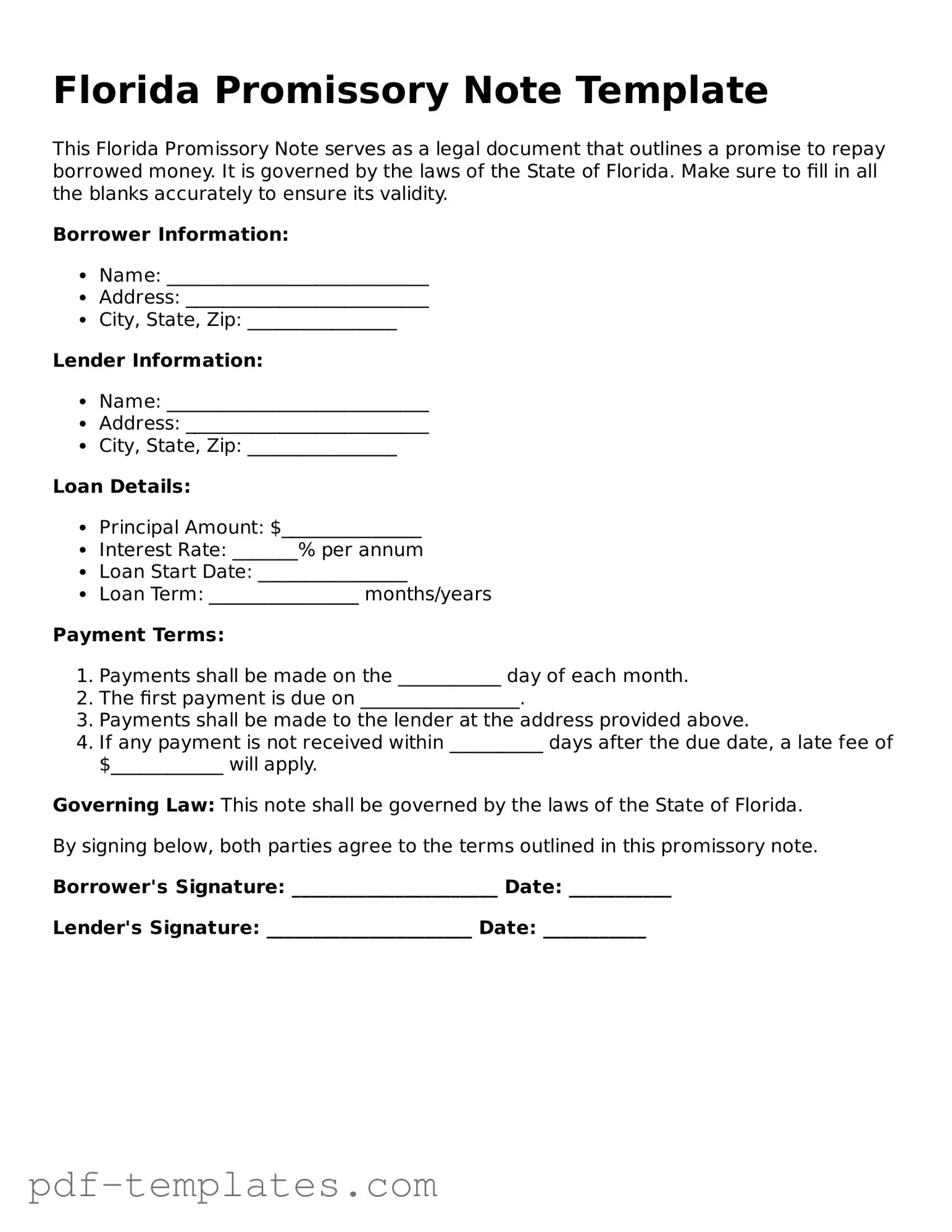The Florida Promissory Note is similar to a Loan Agreement. Both documents outline the terms of borrowing money and specify the obligations of the borrower. A Loan Agreement typically includes details such as the loan amount, interest rate, repayment schedule, and any collateral involved. While a Promissory Note serves as a simple promise to pay, a Loan Agreement is more comprehensive, often including additional clauses about default, remedies, and other legal considerations. Both documents are essential for protecting the interests of the lender and ensuring clarity in the borrowing process.
Another document that shares similarities with the Florida Promissory Note is a Mortgage. A Mortgage secures a loan with real property, while a Promissory Note is a promise to repay the loan. In a Mortgage, the borrower agrees to give the lender a legal claim to the property if they fail to repay the loan as agreed. This relationship is often documented together, with the Promissory Note detailing the repayment terms and the Mortgage providing security for the lender. Both documents are crucial in real estate transactions, ensuring that lenders can recover their investments in case of default.
A Secured Loan Agreement also resembles the Florida Promissory Note. Like a Promissory Note, it outlines the terms of borrowing, but it includes specific information about the collateral securing the loan. This collateral can be personal property, real estate, or other assets. The Secured Loan Agreement details what happens if the borrower defaults, including the lender's rights to the collateral. Both documents aim to protect the lender's interests while providing borrowers with clear terms for repayment.
Understanding the significance of a Living Will is crucial for making informed healthcare decisions. By utilizing this important legal document, individuals can articulate their preferences regarding medical treatment. Don't miss the opportunity to secure your medical wishes by filling out your Living Will form today. You can find more information and the necessary documents in the Texas Living Will form resource.
The Florida Promissory Note is also comparable to an IOU. An IOU is a simpler, informal acknowledgment of a debt, whereas a Promissory Note is a formal legal document. An IOU typically states the amount owed but lacks the detailed terms and conditions found in a Promissory Note. While both documents signify a debt obligation, the Promissory Note provides a more structured framework, including interest rates and repayment schedules, making it more enforceable in a legal context.
Lastly, a Personal Loan Agreement is similar to the Florida Promissory Note. This document outlines the terms of a personal loan between individuals. It specifies the loan amount, interest rate, repayment terms, and any other conditions agreed upon by the parties. While a Promissory Note focuses primarily on the promise to repay, a Personal Loan Agreement often includes additional provisions, such as late fees or prepayment penalties. Both documents serve to clarify the expectations of both the lender and borrower, minimizing the potential for misunderstandings.
